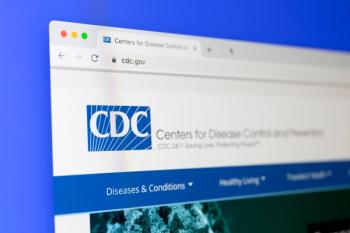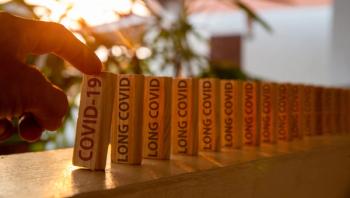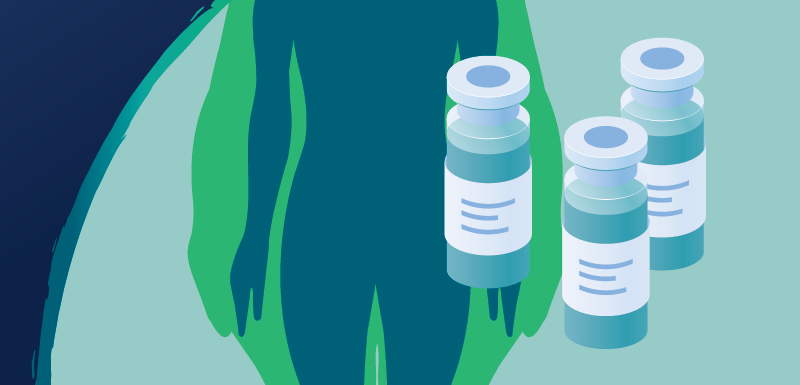
Virtual Escape Rooms for Emergency Preparedness: Pharmacists Innovate Training Through Gamified Learning
Emergency medicine pharmacists discuss how they used a gamified, PowerPoint-based virtual escape room to improve disaster preparedness training, strengthen critical thinking, and highlight the essential role of pharmacists in emergency management.
In an interview with Pharmacy Times, Deborah Booth, PharmD, MS, MPH, BCPS, BCEMP, CPH, and Allison Tempo, PharmD, BCPS, clinical pharmacy specialists in emergency medicine at Overlook Medical Center, discussed their innovative approach to disaster preparedness education using gamification. They developed a PowerPoint-based virtual escape room to engage learners, incorporating quizzes and cultural references, with the goal to enhance pharmacists’ knowledge in emergency management. Despite a small sample size, the activity fostered critical thinking and teamwork. Booth and Tempo emphasized the importance of pharmacists in disaster scenarios, highlighting their roles in protocol development, medication delivery, and training.
Their peer-reviewed original research paper, “Improving Disaster Preparedness and Reaction in a Community Medical Center Pharmacy Through Gamification,” was published in the November issue of Pharmacy Practice in Focus: Health Systems and can be read
Pharmacy Times: Can you introduce yourselves?
Deborah Booth, PharmD, MS, MPH, BCPS, BCEMP, CPH: Hi, my name is Deborah. I am a clinical pharmacy specialist in emergency medicine, and I work at Overlook Medical Center at Atlantic Health, and I have my colleague here today, and I'll let her introduce herself.
Allison Tempo, PharmD, BCPS: Hi, I'm Allison Tempo. I am also currently a clinical pharmacist in emergency medicine at Atlantic Health Overlook Medical Center, specifically at their standalone emergency department [on] Union Campus.
Pharmacy Times: What inspired you to study disaster preparedness among pharmacy team members, and how did you decide on a gamified approach using a virtual escape room?
Booth: Thanks for that question. First off, as I started designing a lot of different education series, I had started reading a lot about gamification for clinical pharmacy content. And I had done some minimal work with some sepsis education and some of our opioid stewardship work with teaching some of our new learners, and I found some of the newer learners got a little bored throughout the teaching and learning process. And during the pandemic, we had a lot of online learning, and it was really difficult to assess some of the learning, and some students might not have been available because they were sick—for whatever reason it might have been—and I wanted a way to present something in person, if they were able to make it, but also online. So, that's kind of where I got the PowerPoint idea from so I could display it on whatever teleconference system that we had, whether it was Teams or a Zoom session. And I wanted it to be fun and engaging, so they could kind of take away some cute little concepts and some of the educational components that we were providing with them.
We chose disaster preparedness as a topic because, at the time, I was working on enhancing some of our toxicology and antidote builds as part of the [Institute for Safe Medication]'s Best Practice statement when we were doing a gap analysis. Actually for our opioid stewardship projects, one of the next lines was that you have the antidotes available, so that led to, "Well, how do we teach people about antidotes and where to get these antidotes as that best practice?" And at the time, I was working on my master's in public health, and it was focusing in disaster management, so I wanted to add a little spin and take into some of those components to try to help teach as well as make it kind of fun for all learners.
Pharmacy Times: Can you describe the process when designing the virtual escape room and how you selected the 4 scenarios? What challenges did you face during design and how did you address these?
Booth: The process that I started off with was designing a storyline and [I used] a lot of sticky notes to try to highlight what elements of the storyline you could use to add questions into. So, you're thinking through, "How can I quiz my learner, or how can I test and assess their knowledge?" You'd write out the story and then use little sticky notes to insert and [think], "Oh, I could ask a question on that certain topic or that specific disease state," as I designed the different quiz questions. Then I started building, "How can I make that into something that's a lock or a little puzzle that they can try to answer?" One of the questions that I ask is, "What is the number for poison control?" because that's a really important component when we're trying to assess in disaster management and antidotes, "How can I contact the experts who know what that is?" Our pharmacists and our team members may know how to contact them, but not everyone does, so we wanted to make sure we were able to assess that knowledge, or at least [describe] where to go to look up that piece of knowledge.
Other scenarios were kind of based on some of our competencies that we have to assess every year, so that's kind of how we chose some of those components of what would be the important things, and what should our general team members know about disaster preparedness and disaster management. And then, as I also built some of these questions, I like to throw in some cute little cultural context. So, in one of the slides, one of the antitoxins for botulinum is abbreviated BAT for "botulinum antitoxin," and I thought it'd be really cute to incorporate an opera called Die Fledermaus by [Johann] Strauss [II], which means "bat" in German. So, I threw a little bit of cute clinical context, which most people might not necessarily understand, but it was something cute to add in.
From a challenge standpoint as I did the building, even though you have all these sticky notes and you're building all of [this] content, sometimes you miss a link or miss part of your PowerPoint slide as you're putting it in. So, the validation probably was the hardest part behind the entire process, as it could be quite time consuming to make sure every single link went back to the right slide as we did the build.
Pharmacy Times: Even with a small sample size, participants reported meaningful improvement. How do you interpret these results in the context of broader pharmacy training?
Tempo: The small sample size we definitely attribute to just being the voluntary nature of this learning activity. It wasn't required, it was just [open to] whoever was around and felt like learning something. But we think regardless of that small sample size, our results really speak volumes towards pharmacy training in general. As pharmacists, I feel like sometimes we come to work, we get our work done, and we go home, and we don't always think about the "what-if" or worst-case scenarios, and then that leads to when those scenarios occur, chaos and anxiety. So, even though pharmacists don't generally have formal training in the content when it comes to emergency preparedness, we think a simulation like this really can help pharmacists get into a mindset just to think about where their resources are, or how to contact people who could help you or help you find the answer, as well as just interpreting the policies and procedures that we have that maybe you're not always looking at all the time..."if A, then go to B," just kind of assessing that. And we think the growth of any amount of our team members, even though it was a small amount, really helps contribute to the overall strength of our department and the hospital as a whole, especially when it comes to emergency preparedness scenarios like this.
Pharmacy Times: What elements of gamification (eg, competition, problem-solving, immediate feedback) do you believe contributed most to the participants’ learning and confidence?
Tempo: I think seeing things in a funny or unique method is always more memorable than just a lecture. The problem-solving aspect, I think, allows for different connections to be made, and enhances each individual's critical thinking. I also think that immediate feedback of, "Did I get that answer right, yes or no?" was super helpful, because [participants] can kind of see in real time if they're retaining [information] or what they need to go back and look at. And the activity was also done in small groups, so it kind of helped with that teamwork/team-building aspect as well, which is not only just an essential component of health care, but is something that's super necessary in the event of a true disaster scenario, we would need everyone to kind of work together.
Pharmacy Times: In your opinion, how can hospitals or health systems better integrate pharmacists into their emergency management teams?
Tempo: I think there are so many avenues and ways that a pharmacist can be integrated into an emergency management team, and I think right now, maybe we're not always utilized as well as we can be. Pharmacists have a unique skill set. We're the medication experts, so I think it's really essential to have pharmacists involved in these teams. We can assist with the development of protocols and treatment guidelines, as well as helping with dispensing and expediting medication delivery and administration in disaster scenarios. Pharmacists can also be involved in teaching and training, as you can kind of see from what we did here, not only teaching other pharmacists, but also sharing this and other information with our providers and nurses as well so that they're aware of these things, too. We can also help participate in hospital-wide drills and different tabletop simulation exercises to ensure that all departments are prepared, not just our providers and our nursing [staff], but also security would have to be involved in certain disaster scenarios. So, kind of getting everyone together. And even something like this virtual escape room can help with quickly delivering a small amount of information in a short amount of time that people can remember, so it might not touch on every single aspect, but it at least starts to build that framework for people.
Pharmacy Times: Ideally, how would you like to see your paper inform future research on pharmacy preparedness?
Booth: I think this paper definitely helps demonstrate that there are so many different modalities of teaching other learners, and I hope that this type of paper and this type of research continues to garner support, as I don't think there's a lot of research into the gamification and there's definitely not a lot of literature on pharmacy disaster management involvement. I think everyone's unique approach and everyone's unique learning styles need to be tapped into, because there is not one right way to learn and there is not one right way to teach, and we're just enhancing the ability of others to obtain that information and know where the resources are, and then to critically think and apply that knowledge. So, I hope this inspires other people to either build a program, teach other people, and then to continue doing the research process and answering some of our unknown questions.
Pharmacy Times: Any final or closing thoughts?
Booth: This paper and this project were truly a labor of love. I love making these little game PowerPoints and different events kind of contribute to all of this, and the writing of this was truly something that gave me joy and definitely brings me personal job satisfaction for it. And then, seeing that validation as we're doing the testing and the quizzing as that spark of recognition kind of flashes on someone's face when they realize, "Oh, that's what they meant," or "Now I get that." That component from school and that application into the real world of "I get it now," I think that's really a rewarding opportunity as kind of an educator and then being able to write on that was truly, truly rewarding.
Newsletter
Stay informed on drug updates, treatment guidelines, and pharmacy practice trends—subscribe to Pharmacy Times for weekly clinical insights.












































































































































































































